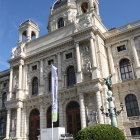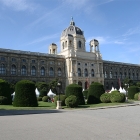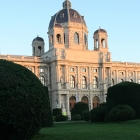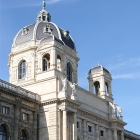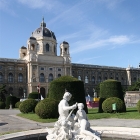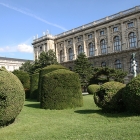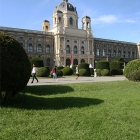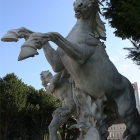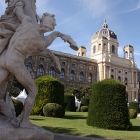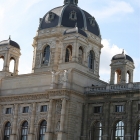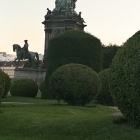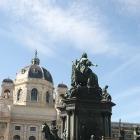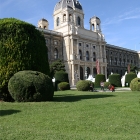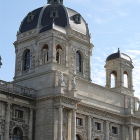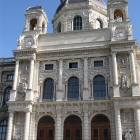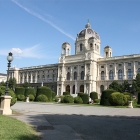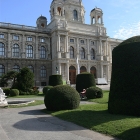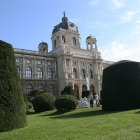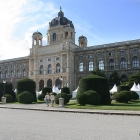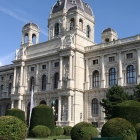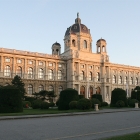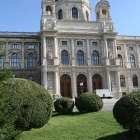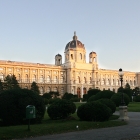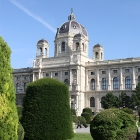Museums’ square in Vienna’s Maria Theresa Plaza
Half of millennium ago, on the place of Ringstrasse, the most important boulevard in Vienna, stood the mighty city walls that stopped the Ottoman army in its march to the heart of Europe. At the orders of the Hapsburg emperor Franz Josef, the remains of the walls were turned into a wide boulevard in the middle of the 19th century. On one side of the road is the Hofburg Palace, the winter residence of the royal family, now presidential palace and national library.
Crossing the Gate of Vienna you reach an even more impressive square, with landscape painting and statues. On the two sides are two identical monumental buildings, the Museum of Art History, and the Museum of Natural Arts.
Both museums have been opened at the same time, in 1891. The buildings are constructed in the style of Italian Renaissance, by Gottfried Semper and Karl von Hasenauer, and have domes that are 60 m high. The Kunsthistorisches Museum is home to some of the most valuable works of art in the world, signed by Rembrandt, Peter Brueghel, Rubens, Raphael, Jan van Eyck, Caravaggio, Albrecht Durer, Diego Velazquez. The Naturhistorisches Museum also has an amazing collection of zoology and archeology.
The Maria Theresa Plaza is dominated by the statue of the only female that ever ruled in the Habsburg dinasty. The empress sits on the throne and shows the document that amended the Salic Law, that forbid women from becoming rulers.
Maria Theresa reigned for 40 years over Austria, Hungary, Bohemia and many other territories. The empress had 16 children, among which Maria Antoinette, the queen of France, guillotined by the French Revolution.
Mai multe despre: Architecture, Austria • Austria • classical architecture • Kunsthistorisches Museum • Maria Theresa • Naturhistorisches Museum • plaza • Ringstrasse • Vienna • Wien- Home Page
start page - Architecture
landmark buildings - Sacred architecture
places of worship - Nature
landscape photography - Concert
performing artists - Christmas
Santa Claus pictures
- Jooble
jobs for photographers - Escape
an out of control blog - Merry Christmas
The best organizer of Christmas parties - Astro photo
Eclipse hunting and astrological photography

